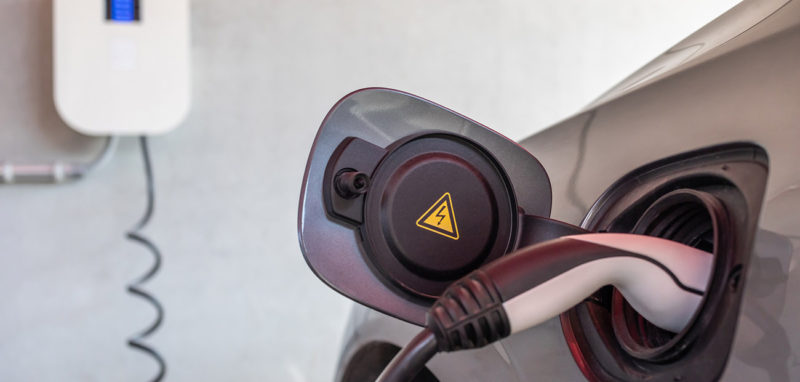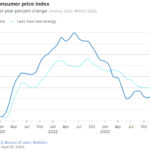From vehicles to lawn tools, electric features are here to stay and growing in popularity, which means homes need to be equipped to handle the demand.
Key takeaways:
- As the demand for electric vehicles, solar battery backups, and electric tools increase, so too will the need for charging options at home.
- Retrofitting existing homes might mean upgrading electrical panels or coming up with creative solutions in the garage.
- Electric is here to stay, and builders will want to plan for sufficient charging capacity in new homes.
According to Sense, an energy monitoring company, household energy consumption rose at the onset of the pandemic and will likely continue to increase. Several factors contributed to the increase, such as more people staying home because of COVID-19 protocols, extreme weather, and warmer summers. Another is the ongoing trend toward increased household electrification, which consumers are turning to in an effort to lower carbon emissions and fuel-related costs.
Increased production and demand for electric vehicles will push the need for home-based energy consumption even further. Currently, there are 20 completely electric vehicles available in the U.S., comprising about 4% of the market; that share is expected to grow exponentially in the coming years. Automobile makers currently project that an average of about 50 percent of vehicle sales will be of electric vehicles by 2030.
General Motors is committed to offering 30 electric vehicles by 2025, and Ford expects 40% to 50% of its vehicle volume to be fully electric by 2030.
The prominence of electric vehicles is only one reason housing design will need to change to accommodate electrification needs at home. And the current housing stock will need to be prepared to ensure homeowners’ electrification needs can be met.
Equipping Homes With EV Chargers
“The rapid increase of electric vehicle adoption comes from a need to provide simple, easy-to-use, and easy-to-install options for charging at home,” says Douglas Alfaro, general manager of North America Wallbox, which offers at-home EV charging stations.
According to Forbes, about 80% of vehicle charging takes place at home, so having access to a 240-volt outlet in the garage, which is considered level 2 charging, is important for both new builds and resale. Many homeowners can take advantage of off-peak pricing to save more—with overnight charging, they receive the equivalent of leaving your home with a full tank of gas each day.
Likewise, rental or investment properties owners might consider adding EV chargers so that tenants and guests with electric vehicles can charge during their stay.
Some considerations are required when outfitting homes with EV chargers. In older homes or homes that have inadequate electrical panels, installation may be difficult. These panels could be inadequate for a level 2 charger, and an upgrade could add $2,000 to the project's cost. The location of the panel can also add to the cost. Ideally, the panel would already be located in the garage, but in many homes, it’s on the opposite end of the property or a different level of the home. Because of these factors, installation can range from $500 to $2,500.
Also, though some hybrid models use a 120-volt charger, known as level 1 charging, other EVs require level 2 charging. And if an EV parking spot doesn’t offer the correct charger, this can present a logistical issue to work out.
Temperature Control and Electric Vehicles
Electric cars are sensitive to temperature. Recurrent, which creates battery reports for EV drivers, has published several studies on temperature impacts on EVs.
"Your electric car and its battery do not enjoy extreme conditions," said Andrew Garberson, head of marketing at Recurrent. "While cold weather causes temporary reductions in EV range, prolonged exposure to high heat or charging in hot conditions can permanently reduce battery health."
This is a factor when designing the garage’s climate control. Depending on your region and the insulation in your garage, it could be helpful to install or upgrade the HVAC as part of your EV investment.
Driving during winter is a common concern for EV owners. When temperatures drop below zero, an electric vehicle's range can drop by as much as 50 percent. While this should still suffice for many commutes, the ability to control the vehicle's temperature in the garage could make a difference. On the positive, EVs warm up faster than cars with internal combustion engines and produce neither harmful carbon monoxide nor carbon dioxide, so you can warm them up in the garage with the door closed.
Battery Backups for Solar Energy
Owning an electric vehicle is often a gateway to the overall awareness of energy consumption that spurs the desire to seek out renewable sources of energy, which often leads to solar panel investment. Homeowners have two options for unused energy created by the solar panels: sell it back to the local utility provider or store it in a battery backup.
Many states and utility providers offer net metering, which means that the utility will buy excess power. Homeowners without a battery backup can essentially use the grid as a battery or energy bank, receiving a credit for their excess power. Still, homeowners will face times when energy does need to be purchased, particularly on a cloudy day or in winter months when the sunshine is less strong. This is when a battery backup might come in handy.
Battery backups allow homeowners to store excess power from solar panels. This is a great option for a number of scenarios:
- The stored electricity can be used on days when not enough energy is made through solar.
- Though connected to the electrical grid in most areas, solar-powered homes with battery backups are not dependent on the electrical grid. Using a battery backup means that the home will still have power during outages.
- Battery backups allow you access to real-time tracking of how much energy your home is using and producing.
SPAN, a company that creates energy storage solutions for homes, offers an intelligent panel that monitors energy usage and allows users to prioritize loads should there be a power interruption. This is a useful option for a homeowner who has solar and a battery backup system.
It also offers a companion EV charging system, called the SPAN Drive, which the company claims to be the most advanced at-home electric vehicle charging solution. It allows real-time coordination with home loads, solar panel output, and home batteries for the maximum available charging speeds and optimized energy usage. Expect to see companies offering bi-directional wall connectors in the future, which will allow electric vehicles to work as battery backup systems for homes.
Electric Lawn and Outdoor Tools
Electrification has expanded to outdoor tools. Companies such as Ego Power are gaining popularity with new, efficient versions of electric lawn and snow equipment, including lawn mowers, snow blowers, leaf blowers, hedge trimmers, and even chain saws. These tools are more efficient and require less maintenance; they’re generally quieter than their gas-powered counterparts and have no emissions. A full charge typically provides from 45 to 90 minutes of use; the batteries can typically be charged in the same amount of time. While the batteries will degrade over time, they should last for many years without noticeable performance issues. Ego’s batteries are compatible with the company’s 50-plus tools and are recyclable.
Electrification is a trend that is not going away. Agents and home builders should advise clients to prepare for the future by upgrading electrical panels, installing solar panels and battery backup storage capacity, and adding or planning for EV charging in the garage.
Source: magazine.realtor












